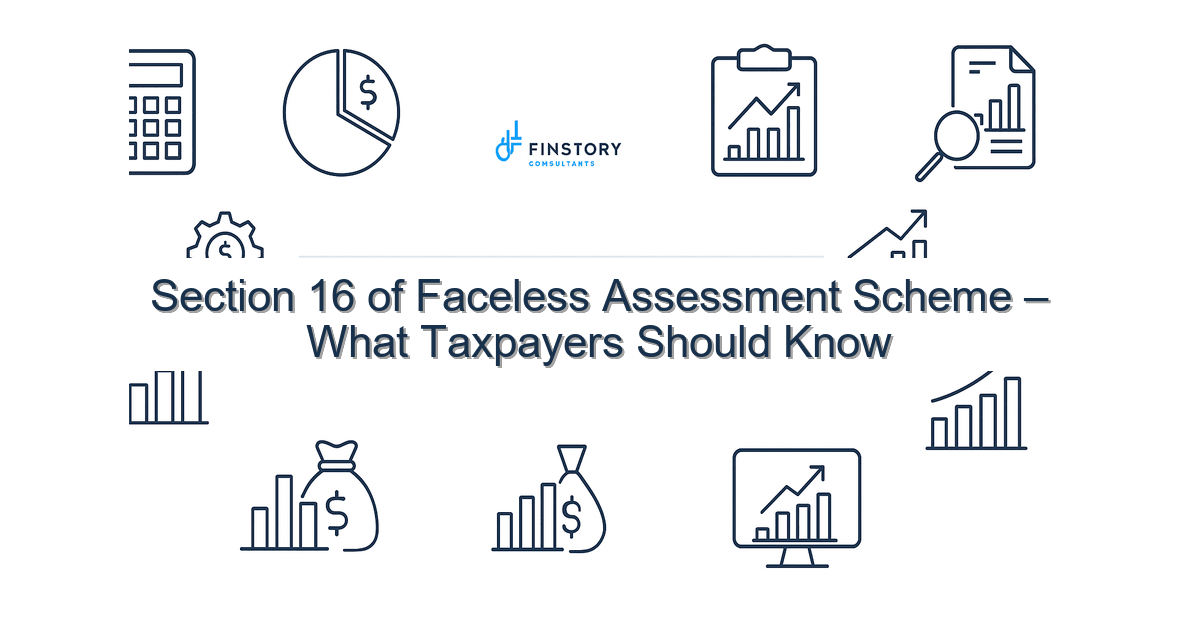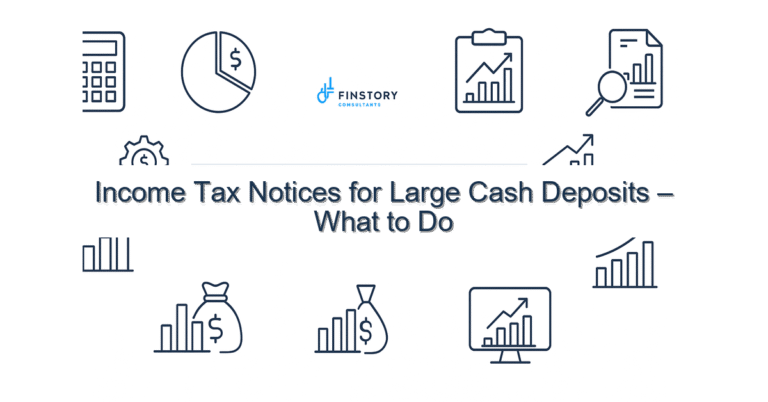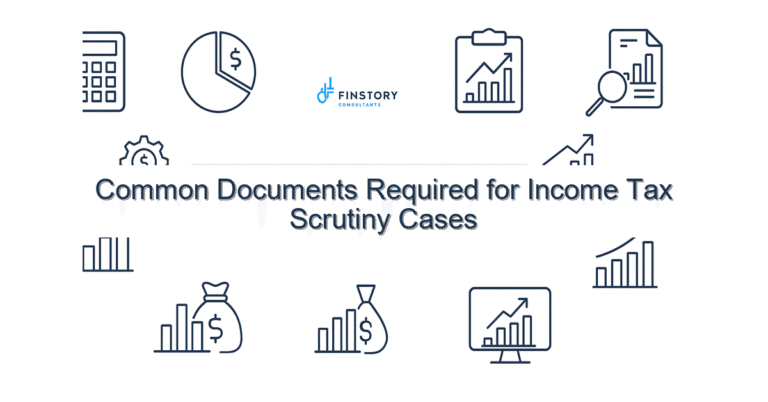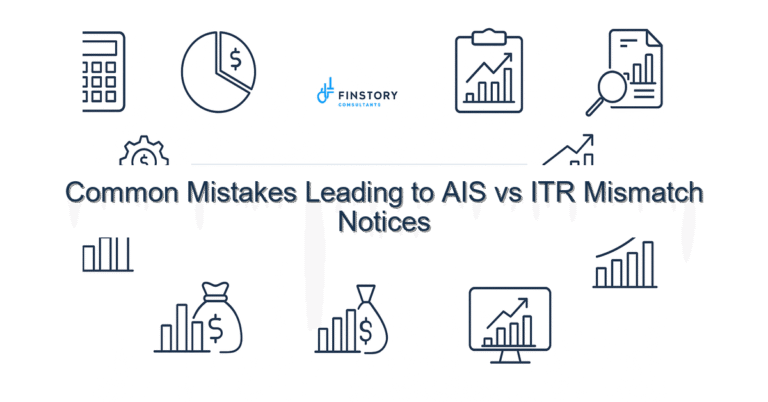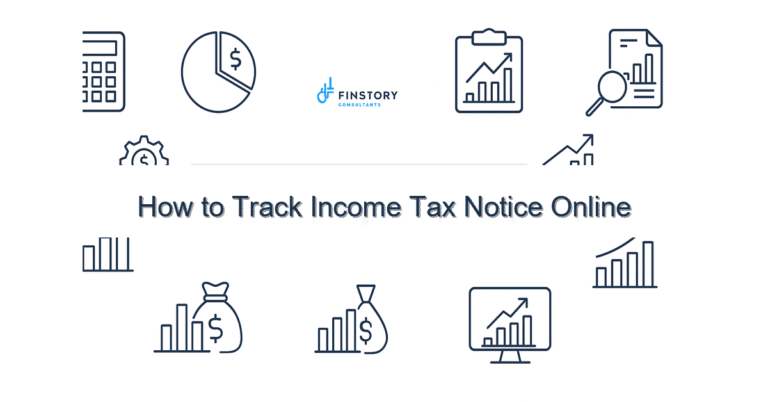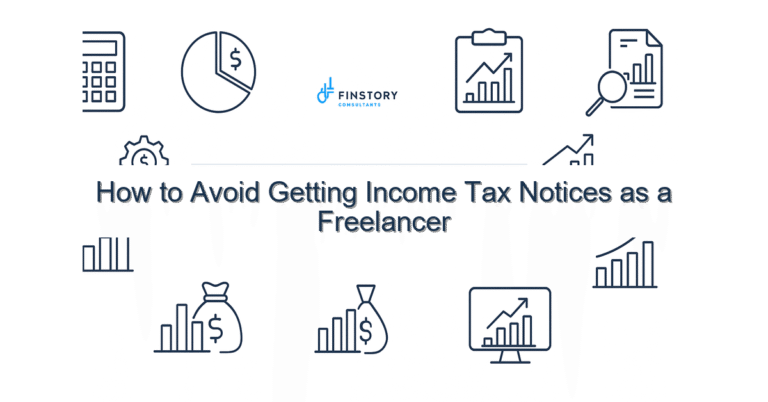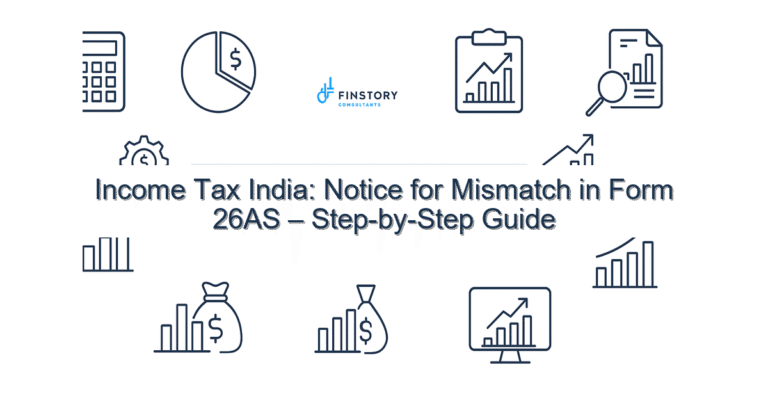Section 16 of Faceless Assessment Scheme – What Taxpayers Should Know
We know tax notices feel stressful — sudden digital letters, unfamiliar terms and tight timelines make even organised taxpayers uneasy. Whether you are salaried, a founder, a professional or run an MSME, Section 16 of the Faceless Assessment Scheme changes how the tax department communicates and what you must do next.
Summary: Section 16 governs communications and procedural notices under the faceless assessment process. It emphasises electronic service, strict timelines, and structured responses — so proper documentation, timely replies and professional help can prevent escalations and unnecessary demand notices.
What’s the real problem in India?
Faceless assessment was introduced to reduce face-to-face interaction and bring uniformity. But for many taxpayers, the shift to an electronic-first process creates confusion:
- Mismatch between what a notice asks vs what records you have (and when it was issued relative to AY/PY limits).
- Unfamiliar acronyms and portals — AIS/26AS data, e-filing correspondence, and CBDT timelines for response.
- Fear of losing benefits like Section 80C limit claims or correct capital gains indexation because of late or inadequate replies.
- Worry about TDS/TCS discrepancies shown in AIS/26AS leading to a demand even if the tax was paid.
What people get wrong
Common mistakes amplify the stress and increase tax outgo:
- Treating a faceless notice as informal or optional — many notices have strict reply windows and can lead to best judgment assessments.
- Ignoring AIS/26AS mismatches — TDS/TCS entries often reconcile problems early if checked against Form 16/Form 16A.
- Responding without records — submitting an incomplete or poorly-documented response increases the chance of an adverse order.
- Assuming old vs new regime slabs or deductions don’t matter — choosing the wrong regime for the year can affect refunds and notices post-assessment.
A better approach
Think structured, digital and evidence-based. Here’s a simple 4-step framework you can follow:
- Verify the notice: Confirm sender, PAN, AY/PY, and the exact issue raised. Check the e-filing portal and your AIS/26AS to reconcile the facts.
- Map documents: Identify supporting files — salary slips, bank statements, Form 16/16A, investment proofs (Section 80C limit evidence), and capital gains computations with indexation if applicable.
- Prepare a clear response: Draft a concise, factual reply attaching documents, referencing exact clauses of the notice and legal points when needed.
- File and follow up: Upload via the e-filing portal within the timeline, retain acknowledgements, and track status. If unresolved, escalate via required channels or seek a consultation.
Real-world example: A Bengaluru startup founder received a faceless notice about unexplained cash credit for AY 2023-24. By reconciling TDS/TCS entries in AIS/26AS and attaching bank remittance proofs and shareholder loan agreements, the founder got the issue closed without demand — response filed within 15 days saved an estimated ₹4.5 lakh in potential claim disputes.
Quick implementation checklist
- Open the notice immediately and note the e-filing REF ID, date, and last response date.
- Log into the e-filing portal and download the exact notice copy and related attachments.
- Reconcile the facts with AIS/26AS and Form 16/Form 16A for the relevant AY/PY.
- Collect documentary proof: salary slips, bank statements, investment receipts (Section 80C limit documents), capital gains computations with indexation.
- Draft a point-by-point response: refer to paragraphs in the notice and attach annexures with labelled file names.
- Upload response through the e-filing portal and save the acknowledgement PDF immediately.
- If the notice mentions TDS/TCS, confirm payer records and raise corrections where mismatch exists.
- If unsure, book a short consultation before filing to avoid incorrect admissions or partial replies.
- Set calendar reminders for follow-ups and possible hearing links under the faceless scheme.
What success looks like
- Reduced notices — fewer repeat communications from the tax department over the next 12 months.
- Higher refund rates — timely and accurate replies lead to faster ITR processing and refunds.
- Lower dispute % — less likelihood of best judgment assessments and penalties.
- Faster closure — average closure time drops when replies are evidence-backed and filed within CBDT timelines.
- Improved documentation culture — organised books, reconciled AIS/26AS and consistent TDS/TCS tracking.
Risks & how to manage them
Key risks are missed timelines, incorrect admissions, and poor reconciliation. Mitigation tactics:
- Missed timelines — always act within the notice deadline; if you need more time, request it through the portal and state reasons.
- Incorrect admissions — do not concede facts without documents; state provisional responses and reserve rights where necessary.
- Mismatched TDS/TCS — proactively approach deductors for corrections and file rectification or revised returns when eligible.
- Technical confusion — when a legal point is unclear (e.g., treatment under new vs old regime slabs), consult a tax expert before filing a substantive reply.
Tools & data
Leverage technology and official data sources to stay ahead:
- AIS/26AS — primary source for verifying TDS/TCS credits and reported transactions.
- Income tax e-filing portal — for notices, responses, and tracking status.
- Bank statements and payroll software — reconcile cash credits and salary components.
- TDS/TCS tracking tools and reconciliations in accounting software for MSMEs and professionals.
- Keep proof for capital gains indexation computations and Section 80C limit investments to justify claims.
FAQs
Q: What is Section 16 of the Faceless Assessment Scheme in simple terms?
A: Section 16 in the scheme document deals with how communications and notices are issued and handled electronically under the faceless assessment process — including timelines and modes of service. Always check the notice for specific action items and deadlines.
Q: I received a notice but my AIS/26AS shows the TDS. Do I still need to reply?
A: Yes. Even if TDS is credited in AIS/26AS, the notice may seek clarification or supporting proof. Reconcile payer entries and attach proof (Form 16/16A, bank credits) with your reply.
Q: Will responding late lead to a penalty or best judgment assessment?
A: Delayed responses increase the risk of adverse orders. If you miss the deadline, file a response immediately, ask for time if needed, and document reasons. Professional help can reduce penalty risk.
Q: How does this affect routine ITR compliance like ITR filing last date or choosing new vs old regime slabs?
A: Faceless notices are separate from routine ITR obligations. Continue to meet ITR filing last date, select the correct regime for the year, and document deductions (e.g., Section 80C limit) to avoid later questions in assessments.
Next steps
If you’ve received a faceless notice under Section 16 or are worried about AIS/26AS mismatches, don’t delay. Use our checklist, gather documents and get a short review so you respond correctly the first time. For more reading on returns and planning, see [link:ITR guide] and [link:tax-saving tips].
Work with Finstory. Speak with an Expert for a personalised plan to reduce your tax outgo and stay compliant. Book a free 20-min consultation.
📞 Need help with Income Tax in India?
Book a 20-min consultation with our tax team. Individuals, founders & MSMEs welcome.
Prefer email or phone? Write to info@finstory.net
or call +91 44-45811170.
